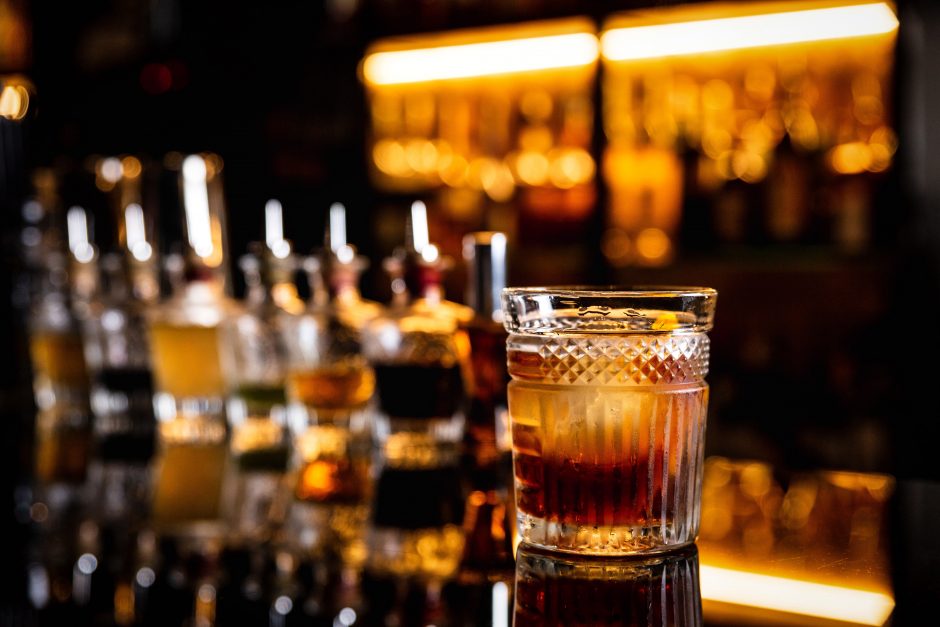Flavoring Whiskey: Why and What Works

Flavoring Whiskey
For any product category, the U.S. growth curve below (past and projected) for Whiskey would be encouraging and comforting. In the past decade, there has been a significant increase in the number of new whiskey distilleries in the United States, and in 2020 it is estimated that the number is around 2,000 with at least one whiskey distillery in every state and the District of Columbia.
So, if the number of distilleries is increasing significantly while volumes at the 13 largest distilleries, which account for 99% of the U.S. volume, are growing as well, what is driving consumption? Several factors: tops amongst them are the recent rise in U.S. Disposable Income (DI); changing lifestyles and consumer preferences, especially related to millennials; and the rise of “craft” micro-distilling boom that has resulted in creative new products (flavored and unflavored) that have broadened the appeal of whiskey, especially to women.
Is the Present Growth Trend Likely to Continue?
If you are distilling and branding whiskey now or considering entering the category, you have to wonder, ‘for how long will category growth continue’, and ‘what can I do to grow my brand even when category growth eventually slows’. To answer these questions, consider the growth drivers.
DI is basically take-home pay minus taxes and is a function of personal wage growth and tax policies which vary over time. In the past four years, DI has been increasing at about a 5% average rate, far outpacing the annual average of 0.86% since 1959.
Consumer tastes and preferences, specifically that of Millennials, are difficult to predict, but their spending power (DI) is likely on the upswing as they are still aging towards their peak income years.
And finally, what kind of legs are left in the present “craft” trend, and how much room is there for further product innovation to broaden the consumer appeal of whiskey.
Though it is difficult to predict future DI and millennial preferences, a look at the historical growth/evolution of other foods and beverages provides insight into the growth of the U.S. whiskey market, and what is required for longer-term prosperity.
How Innovation & Flavors Accelerate Product Category Growth
Pick practically any product category (Vodka, Sparkling Water, Hard Candy, Yogurt, etc.), track its history and growth and you will find that product innovations, including new flavor line extensions, were very important in fueling the growth of the brands. With regards to whiskey, distinguishing innovations like unique blends of grains, sources of water, types of wood, size of barrels, length of aging, unique bottles and labels, celebrity endorsements and new flavors can all extend growth. Being a flavor guy of many years, I’ll next focus on how to pair flavors with whiskey and offer several such options.
Pairing Flavors to Whiskey
Pairing flavors with products is akin to decorating a room. If the room has structures or characteristics that cannot be changed easily, you go with them, finding furnishings, fixtures, colors, and textures that complement those set characteristics. When flavoring whiskey, consider its natural characteristics, the aroma and flavor of the base liquid which is a product of the grain(s) used to make it, the wood in which it is aged, and the character of the base resulting from notes pulled from the casks and the magic of aging (i.e. reaction flavors). For instance, your base whiskey may have notes of malt, corn, vanilla, smoke, fusel alcohol, and apple. In this case, if your goal is to create a softer, broadly acceptable flavor profile, ask yourself what types of flavors can be used to first, soften or mask the less palatable nuances of the base, and second, to accentuate or complement the pleasant notes of the base. For example, Sweetness Enhancer, Vanilla and Marshmallow flavors may round off some of the rough edges, while Graham Cracker, Apple, Cherry, Chocolate, and Chipotle flavors might add pleasant appeal. Playing around with various such flavor notes can result in very interesting and broadly acceptable line extensions such as S’Mores, Baked Apple Pie, Cherry Cobbler, or Chocolate-Chipotle. Concentrate on the overall flavor profile and don’t get caught up in the names. You do not have to call your new product “S’Mores” or “Cherry Cobbler” when fanciful names, like “Campfire Companion” or “Chill-Out Cherry” may be more appealing to your target customers.
Below are a dozen flavor combinations that abelei believes work well in whiskey. Click here for other Sweet-Brown flavor ideas that generally work well in whiskey.
Pecan Pie
Butter Toffee
Mango-Spice
Cherry Cheesecake
Caramel-Apple-Nut
Nutty Glazed Donut
Toasted Marshmallow
Pumpkin Pie Ala Mode
Apple-Cinnamon-Spice
Blood Orange-Chocolate
White Chocolate - Caramel
Cinnamon Toast Crunch Type
Contact abelei to Initiate a Project or Request Flavor Samples
If you would like to discuss flavor and or product development ideas or projects with our team of marketing experts, food & beverage developers, flavorists, analytical chemists, sensory scientists, and regulatory specialists, please feel free to Schedule a Call using the button below. Also, if you would like to jump-start your development project with free flavor samples, please click on the Request A Sample button below to order samples online.
With Flavorful Regards,
abelei flavors!